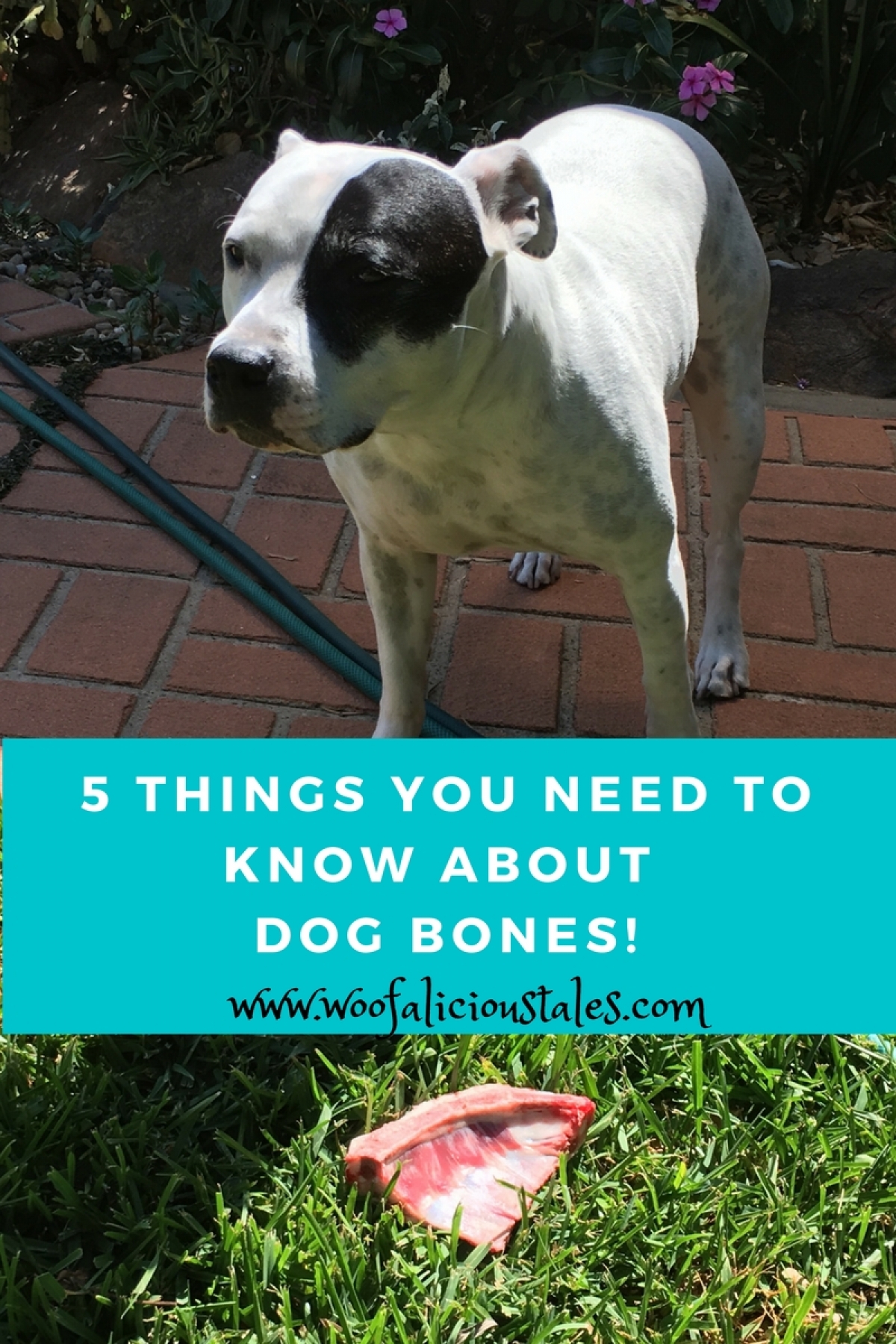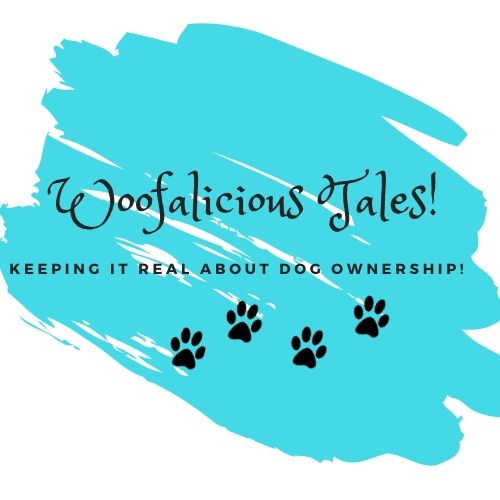5 Things You Need To Know About Dog Bones!

In this day and age there’s a lot of controversy about whether to give your dog a bone or not?
Some say no to bones and some say yes to bones, it really depends on who you’re talking to.
I’m all about giving dogs big raw bones.
According to Martin GoldStein, D.V.M, in his book The Nature of Animal Healing, ‘a long long time ago, like wolves, wild dogs would hunt down their prey in packs. But unless they were starving they wouldn’t eat the dead animal in it’s entirety at once. Instead they’d open its belly and eat the contents, along with the internal organs, then bury the carcass.
A few days later, when they grew hungry again, they’d dig up the carcass and have another full meal.
Today, the only vestige of that behaviour (and diet) is a dog’s instinct to bury a bone.’
Dogs today are much more domesticated but they still carry that instinct. A raw bone is the closest dog’s today come to their natural diet.
We’ve always given all our dogs raw bones but definitely not cooked ones.
5 THINGS YOU NEED TO KNOW ABOUT DOG BONES!
1. BONE POSITIVES
- Raw Bones are the best for your dog. Your dog not only loves chewing on them but they are good for their teeth and mouth hygiene as well.
- Giving smaller raw bones to a growing dog who is losing their teeth is also a great way for them to stop chewing things they shouldn’t.
- Most dogs see receiving a bone as a treat.
- Chewing a bone can take hours of their time.
- Bones are natural.
- A highly digestible source of calcium is provided by raw bones, and they provide a natural balance to the higher levels of phosphorous found in raw meat.
- Raw bones are cheap. We can get a bag of raw bones from the local butcher for $2. You can then put 2-3 in a bag and freeze them.


2. BONE NEGATIVES
- It’s never a good idea to give your dog cooked bones. Why – because they are brittle and can splinter while inside your dog and cause internal ruptures and all sorts of damage internally.
- Bones can get stuck. A customer recently told me her little dog just wasn’t herself, so they took her to the vet and it turns out she had a bit of bone stuck in between her teeth that she couldn’t dislodge and it got a little infected.
- Dogs can become very possessive of their bones. When we were feeding my cousins dog, we (after checking with her) gave him some bones and she warned us not to go near him while he was eating them. He didn’t bite us or anything but he let us know they were his and we weren’t to go too close.
- If you have more than one dog giving bones can cause fights.
- Too many bones can cause constipation.
- Dogs like to dig holes and bury their bones.
3. WHAT TYPE OF BONES ARE BEST?
- Raw meaty bones like raw lamb ribs (not chops), raw lamb flaps and raw chicken wings or raw chicken necks.
- They must always be given raw (uncooked).
- I always buy bones that are too big to get stuck in Billy’s mouth, that way he can naw on them but no harm can come to him. The only incident I can remember having was with Henry and Isabel, I gave them chicken necks. They both tried swallowing them hole and Isabel nearly choked because she tried swallowing it whole!! Needless to say, I steer clear of chicken necks when it comes to staffies.
- Avoid large marrow bones (these have very thick outer rims), T-bones, ‘chop’ bones e.g. lamb cutlets, large knuckle bones and bones sawn lengthwise (as done by some butchers) as dogs may crack their teeth on these.

The two bones above I took out of the bag of bones because there is every chance they could get stuck in Billy’s mouth.
4. HOW OFTEN SHOULD I GIVE MY DOG BONES?
- Generally 1-2 raw bones a week, with a few days in between each serving.
- The bone must be large enough so that your dog cannot fit the whole bone in its mouth or swallow the bone whole.
5. BONE SAFETY!
- You should always supervise your dog when they are eating bones.
- Know your dog’s behaviour while they’re eating their bone.
- Don’t let anyone go near them while eating their bone.
- Don’t give your dog the bone and then decide to take it off them.
- Know that there’s a chance your dog might not eat the bone straight away. While no-one is looking is when they go and bury that bone. That ‘wild dog’ instinct kicks in.
- You can give your puppy bones but again, do it according to their size.
- If your dog is not use to eating raw food, slowly introduce them to the raw bone, give them a chance to get use to it and to check it out.
- If you have more than one dog, be aware of their behaviour before giving them bones. What are they like at dinner time? Do they fight and compete? You may have to separate them before giving them each a bone.
WHAT DOES THIS MEAN?
It means it’s a personal choice whether you want to feed your dog raw bones or not.
Ask at your local butcher too see how much they charge for a bag of raw dog bones. They’re nutritional and cheap.
However, I can’t stress enough how important it is to supervise your dog and gauge their behaviour while they’re eating their bone. Also check your dog’s mouth once they’re finished chewing on their bone.
I know Billy loves his bones. Do your fur kids love them or have you chosen not to feed them to your fur kids? No judgement either way, it’s a personal choice.
We’d love to hear from you.
Cheers
J & B
Woofalicious Tales


Leave A Comment